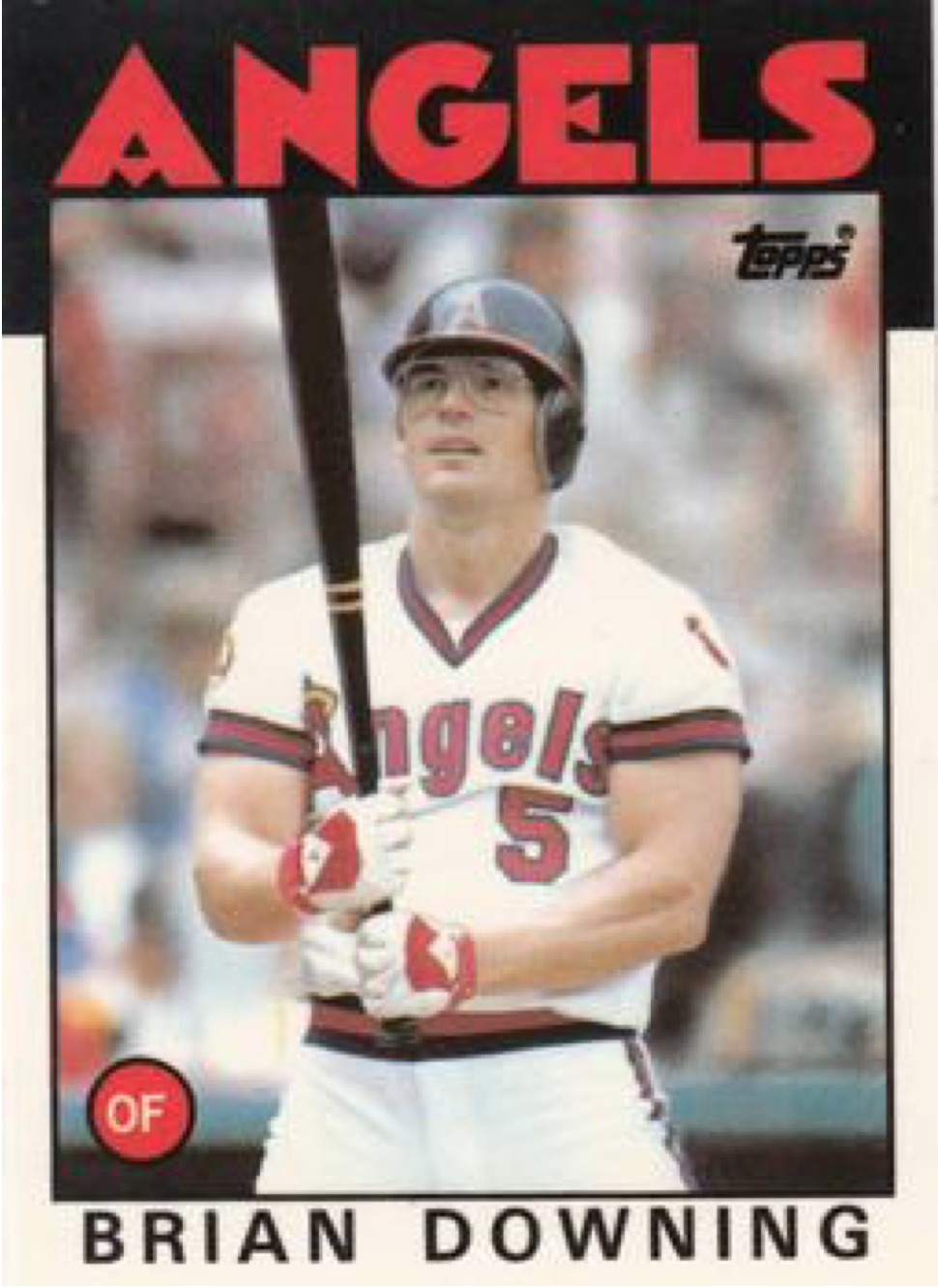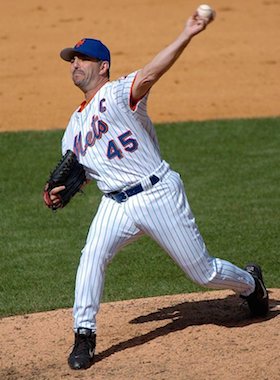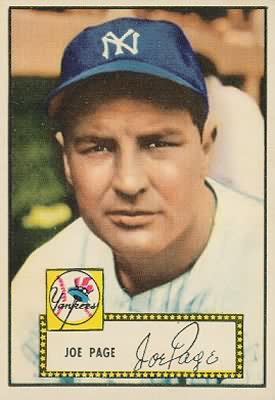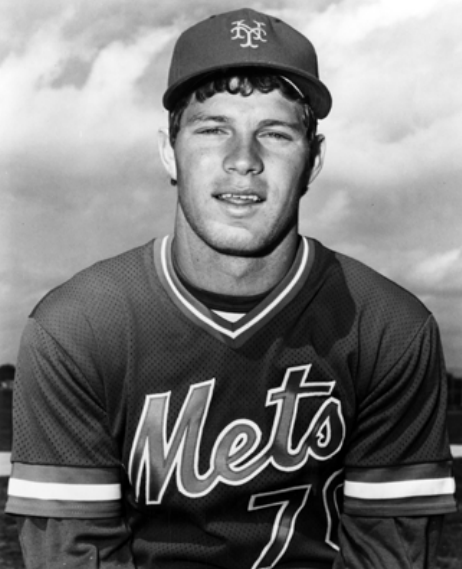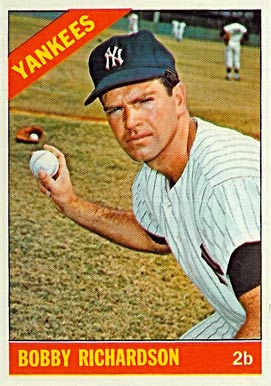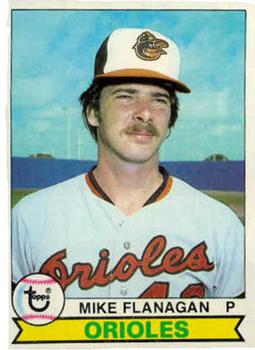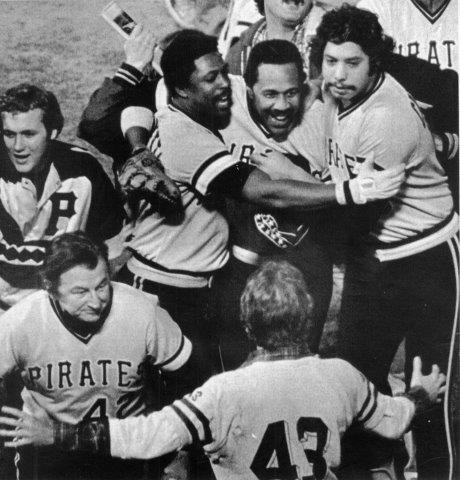October 7, 1944: Stan Musial’s blast helps Cardinals level Trolley Car World Series at 2-2
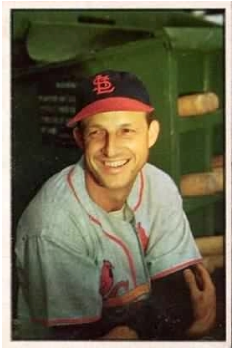 Stan Musial’s arrival with the St. Louis Cardinals coincided with a resurgence for the franchise, which had not been to the World Series since 1934. In 1942, Musial’s first full season, the Cardinals won a team record 106 games,1 and they won 105 in 1943 and 1944. Musial had a good season in 1942, hitting .315 with 10 home runs and 72 RBIs, enough to finish 12th in National League MVP balloting. His 1943 season was even better: He led the NL in nearly every offensive category and won the MVP vote in a rout. His 1944 season was highlighted with a league-leading 51 doubles and a career-high (to that point) 94 RBIs.
Stan Musial’s arrival with the St. Louis Cardinals coincided with a resurgence for the franchise, which had not been to the World Series since 1934. In 1942, Musial’s first full season, the Cardinals won a team record 106 games,1 and they won 105 in 1943 and 1944. Musial had a good season in 1942, hitting .315 with 10 home runs and 72 RBIs, enough to finish 12th in National League MVP balloting. His 1943 season was even better: He led the NL in nearly every offensive category and won the MVP vote in a rout. His 1944 season was highlighted with a league-leading 51 doubles and a career-high (to that point) 94 RBIs.
Musial’s performance in the Cardinals’ 1942 and 1943 World Series, though, could be classified as unremarkable. In the 1942 Series, he hit a pedestrian .222 with only one extra-base hit, a double in Game Four, but the Cardinals took the series from the New York Yankees in five games. Musial hit a bit better in the 1943 series, collecting five hits, all singles, in 18 at-bats (.278), with no RBIs against the Yankees, who captured the Series in five games.
The 1944 baseball season in St. Louis was the same as it had been the last few years, but was remarkably different at the same time. The Cardinals won 105 games for second straight year and captured the pennant by a comfortable 14½ games. That the St. Louis Browns were able to win the 1944 pennant – regardless of the circumstances – shocked the baseball world.2 The Browns won the AL crown on the season’s last day, beating the New York Yankees while the Detroit Tigers lost.
Only the most loyal Browns supporter could have favored the Browns over the juggernaut with which they shared Sportsman’s Park. The Cardinals won the “team triple crown” by leading the NL in batting average, home runs, and RBIs, as well as in hits, doubles, and on-base and slugging percentage. The Cardinals also led the league in ERA, fewest runs allowed, and double plays. The Browns relied on their pitching, coming in second in the AL in ERA, but had struggled at the plate, finishing the season seventh (of eight) in team batting average. The comparisons to the 1906 all-Chicago World Series were apt, with the Cardinals playing the role of the Chicago Cubs, winners of 116 games that season, against the “Hitless Wonder” White Sox.3 Browns fans were hoping for a similar result in the Series.
The momentum that carried the Browns to the pennant carried over into the first three games of the Series. Denny Galehouse scattered seven hits over nine innings as the Browns scraped by with a 2-1 victory in Game One. The Browns notched their runs and only hits in the fourth when George McQuinn homered after Gene Moore got their first hit. The Cardinals tied the Series the next day when Ken O’Dea’s walk-off single plated Ray Sanders for a 3-2 win in 11 innings. Game Three saw the Browns prevail, 6-2, thanks in part to a four-run third. Jack Kramer made the runs hold up, scattering seven hits and striking out 10.
The Browns were two games from glory, and if the Cardinals didn’t get themselves out of the funk that started in September, they would be on the wrong side of one of baseball’s biggest upsets. Cincinnati Reds general manager Warren Giles told NL President Ford Frick, “[I]f they played this kind of ball all season they wouldn’t have been in the Series.”4
No team since 1937 had lost Game Four of the World Series and gone on to win the Series. The Cardinals turned to left-hander Harry Brecheen, who was 16-5 during the season with a 2.85 ERA in 30 appearances (22 starts). Brecheen had the makeup to right the Cardinals’ floundering ship. “Deadpanned and apparently nerveless,” wrote the United Press’s Stan Mockler, “Brecheen has a reputation for having ice water in his veins.”5 The Browns would counter with Sigmund “Sig” Jakucki, 13-9 with a 3.55 ERA in his return to the majors after an eight-year absence. Jakucki was out of Organized Baseball from 1938 through 1943. He worked as a painter and paper hanger, as well as in the shipyards, and played semipro baseball.6 In March 1944 the 34-year-old Jakucki was surprised to receive a letter from Browns general manager Bill DeWitt inviting him to spring training. Praised for his “fast one,” Jakucki made the team.7 Before Game One Jakucki complained of an abscessed tooth, but by the time he took the mound for Game Four, he said there was no pain.8
The Browns were the home team for Game Four, and the largest crowd of the Series so far, 35,455, enjoyed a cool October day. Jakucki struck out leadoff hitter Danny Litwhiler, but then the real 1944 Cardinals showed up. Johnny Hopp singled, bringing up “The Man.” Musial had hits in all three games of the Series so far and didn’t wait long to get one in the fourth, driving Jakucki’s first offering to the far edge of the right-field pavilion for what would be the only World Series home run of his career, giving the Cardinals a 2-0 advantage. Musial said, “It was a fastball just below the belt.”9 After going down in order in the second, the Cardinals doubled their advantage in the third. Brecheen struck out to start the inning. Then Litwhiler singled to left, his first hit in the Series. After Hopp struck out, Musial reached on a slow grounder past the box that was scored a single. Walker Cooper then looped a single to left, scoring Litwhiler. Second baseman Don Gutteridge could not handle Sanders’ hot smash, and Musial scored from second to give the Cardinals an unearned run and a 4-0 lead.
While the Cardinals appeared to have awakened, the Browns were frustrated at every turn. With one on and one out in the first, Moore hit a long drive to right-center that Hopp turned into a spectacular grab. “Had that ball been a foot more to Hopp’s left, he never could have reached it, we’d have a run in, a man on second or third and one out, but he caught it and it certainly was a great catch,” Browns manager Luke Sewell said.10 The Associated Press described the catch as “first degree robbery.”11 The Browns had another chance in the second, but with runners on first and third, a broken-bat grounder from Red Hayworth turned into an around-the-horn double play, ending the threat.
The Browns had runners in each of the next three innings, but Brecheen’s resolve and the Cardinals’ glove work kept their lead at four runs. Brecheen’s excellent defense was on display in the fourth when he retired Vern Stephens, who tapped a slow roller up the middle, especially important since the next hitter, Chet Laabs, lined a single to center. Hayworth led off the fifth with a high pop foul outside first base that Sanders turned into a great catch – he appeared to overrun the ball but was able to reach back and make the play. After a groundout and a single, Brecheen made another fine play, grabbing a low line drive off the bat of Mike Kreevich.
The Cardinals scored their final run of the contest off Al Hollingsworth, who relieved Jakucki in the fourth. Sanders led off the inning with a single and one out later NL Most Valuable Player Marty Marion doubled to left-center to score Sanders and make it 5-0. The Cardinals squandered a chance to increase their lead in the top of the seventh inning. Litwhiler singled but was thrown out at second trying to stretch the hit to a double. Hopp singled and Musial doubled him to third, Musial’s third hit of the game. Hollingsworth walked Cooper to load the bases, but retired Sanders and Whitey Kurowski to end the threat.
The Browns recorded their only run in the bottom of the eighth. Brecheen’s third walk of the game to Moore started the frame, and Stephens’ single moved Moore to third. With the count 1-and-2 on Laabs, Cardinals skipper Billy Southworth went to the mound to talk to Brecheen after two foul balls. His advice paid off; Laabs hit a sharp grounder that Marion grabbed and turned into a 6-4-3 double play as Moore scored. Another grounder to Marion ended the inning. The Browns had one more chance in the ninth, but with two on and two out Kreevich grounded into a fielder’s choice to end the game.
For Musial, his 3-for-4 performance was his best in World Series play. The Cards won Games Five and Six to take the Series, but Musial collected only one double in eight plate appearances in those games. His final fall classic appearance occurred two years later. Musial again hit .222 for the series, collecting four doubles and one triple in St. Louis’s win over the Boston Red Sox in seven games. His final postseason line in 23 World Series games was a .256 average, with 7 doubles, one triple, and one home run. Musial did not mention this game, or any other postseason game, among his 10 greatest days in a November 1954 Sport Magazine article.12
Sources
In addition to the sources cited in the Notes, the author accessed Sport Magazine, Retrosheet.org, Baseball-Reference.com, SABR’s BioProject via SABR.org, The Sporting News archive via Paper of Record, the Cincinnati Enquirer, Detroit Free Press, and St. Louis Post Dispatch via newspapers.com, and the Chicago Tribune archive.
Notes
1 As of the end of the 2023 season, the record still stood.
2 Peter Golenbock, The Spirit of St. Louis – A History of the St. Louis Cardinals and Browns (New York: Harper Collins ebooks, 2000), 305.
3 Frederick C. Lieb, “Browns Hailed as ‘Team of Destiny,’” The Sporting News, October 5, 1944: 2.
4 “Cards Play Like Champions for First Time; Cooper, Galehouse to Renew Rivalry Today,” Cincinnati Enquirer, October 8, 1944: 34.
5 Gregory H. Wolf, “Harry Brecheen,” in Bill Nowlin, ed., Van Lingle Mungo – The Man, The Song, The Players (Phoenix: Society for American Baseball Research, 2014), 204.
6 Wolf, 94.
7 Wolf, 95.
8 David Allen Heller, As Good as It Got: The 1944 St. Louis Browns (Images of Baseball) (Charleston, South Carolina: Arcadia Publishing, 2003).
9 W.J. McGoogan, “Cardinals Win 5 to 1, and Square Series; Brownie Pitchers Yield 12 Hits, Including Homer by Musial,” St. Louis Post Dispatch, October 8, 1944: 20.
10 McGoogan, 19.
11 W.F. Crawford, “Series Sidelights,” St. Louis Post Dispatch, October 8, 1944: 20.
12 Joe Reichler, “Stan Musial’s Ten Greatest Days,” Sport Magazine, November 1954: 12.
Additional Stats
St. Louis Cardinals 5
St. Louis Browns 1
Game 4, WS
Sportsman’s Park
St. Louis, MO
Box Score + PBP:
Corrections? Additions?
If you can help us improve this game story, contact us.


